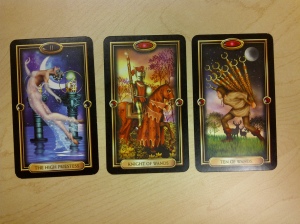We’re going to do something fun today. As I’ve maintained this blog over the past several months, I’ve thought about what it means to be Indie. Indie publishing; Indie music; Indie film…they all have to do with not moving beyond consumption of a product toward developing it yourself. Putting your own stamp on it, as it were, outside the regulations, cultural mores, or “supposed-to-haves” of the traditional model.
And as I thought about this, it occurred to me that I’m doing something similar with my newest hobby–making beer.
I’ve wanted to try home brewing for quite a while, and after pulling out my first batch this past weekend, I can say it was a really fun experience. I enjoy a good beer, but there’s nothing quite like sipping your own brew. A satisfaction not altogether unlike seeing your book in the Amazon store. In fact, home brewing isn’t that different from writing and publishing your own work, once you get past the malt and yeast.
So, for a bit of fun, here’s a few reasons why Home Brewing is like Indie Publishing:
The recipes vary, but you always start with the same ingredients
The great thing I’m learning about beer is that once you get past the Budweisers and Coors and Alexander Kieth’s (previously my favourite), there’s an enormous variety out there. Samuel Smith’s Nut Brown tastes like hazlenut and chocolate; Weihenstephaner makes a dunkel that’s like buttered and toasted rye; the Vermont Pub and Brewery makes their own sour beer that’s like a mix between cider and brandy. But when you get down to it, this incredible variety comes down to four ingredients: malt, yeast, hops and water.
Likewise, there’s as many different types of fiction as there are writers. Our trade defines variety by way of our creativity. And yet, any good story has essential ingredients like plot, character, conflict, a call to action, and so on. As with great beer, the variety comes with how those ingredients play off each other, and how well you use them.
You have to know the rules before you break them
In beer making, sanitising is paramount. It’s so easy for your beer to become infected from the tools you use, not washing your hands, even yeast that’s gone off. The result is a lot of bad flavours in the beer–or worse, a bacterial infection. But there’s an exception to every rule: sour beer is, quite literally, beer that’s become infected and been allowed to develop “off flavours.” It’s an aquired taste, but much sought after in the craft brew world. The thing is, you can’t just infect your beer and hope it will turn out–you have to know what you’re doing, and where it’s appropriate to introduce an infection that might otherwise kill your brew.
The best writers know when to follow the rules, and when to break them. They can tell instead of showing and get away with it. They can add pages of flat exposition with such flair that the reader doesn’t care. Star Wars has some of the most tired and overused tropes in storytelling–but it works, because Lucas knew how to make those cliches work for him. Anyone can break all the rules and try to be revolutionary–only an artist can pull it off.
It’s not impossible, but it’s not simple
The first thing that surprised me when learning how to make beer was how easy it looked. The second thing was how difficult is really was. Beer making really comes down to balancing your ingredients properly, adding things at the right times, and making sure everything is clean. You can pick up a brew kit as a complete novice and brew a decent batch in six weeks with no experience or hand holding. But if you want to be good at it, you have to hone your craft. I’ve talked to people who’ve gone deep enough to grow their own malt, hops, and yeast. It’s one of those things where you’re going to get out of it what you put into it.
Writing’s much the same. Anyone can put a plot on the page, but that’s not really writing. It seems easy, and on the surface, it is–many writers plonk down their first draft without breaking a sweat. But it’s the crafting of that story that’s hard, and I’d venture to say that few people become absolute masters. The really good writers are the ones who make it look easy, knowing full well just how difficult it really is. But on the other hand, it’s not an unapproachable craft–just pick up a pen, put it to the page, and see where it takes you. Like beer making, you can go as deep as you want.
Carelessness can ruin the batch
Remember what I said about sterilization? I’d say at least 70% of the time it took to brew my first batch was taken up with cleaning. It took me fully an hour and a half to properly clean all the bottles before I was able to prime my beer–filling them took about twenty minutes. Fortunately, there are tools to help cut down that time, but it’s still crucially important. And it’s not just proper cleaning–if you add your hops at the wrong time, you’ll introduce an oily bitter taste; too much malt can make it overly sweet; not allowing it to ferment long enough can produce exploding bottles that sends glass through drywall. There’s an adage in the craft brew world that it’s really hard to completely ruin a batch, but by the same token, if you don’t watch what you’re doing, it’s not going to turn out as you like.
You can probably see where I’m going with this one. The Indie Publishing oeuvre is rife with badly edited or composed books. I’ve read some that had a decent story, but were nearly impossible to get through because of paper thin characters and ridiculous spelling mistakes. These are people who haven’t made full use of the resources available to them, or have simply sent out a book they wanted to publish in a hurry, long before it was ready. It might not take an English major to write a good novel, but a writer at least needs to take good care of their story. Otherwise, like bad beer, it’s just hard to swallow. Which leads to…
Patience, patience, patience!
This last one is probably the most important, and it’s easy to fall victim to it on both fronts. A hastily published book–without proper editing, cover art, formatting and so on–is pretty obvious. It turns readers off, and can damage your platform. And a lot of writing is about getting those fine details right–not just spelling and white space, but asking if your character arcs make sense, or if your continuity’s off. These are things that can’t be accomplished on your first draft–you need to be patient as you work them out.
Likewise, patience is the absolute key when brewing beer. One of the biggest reasons a batch can fail is because it was rushed–and in fact, many first time brewers dump a batch that would have been perfectly fine, given time to condition properly.
I’m experiencing this right now, actually. My first batch was scheduled to finish last Friday, so I put a couple bottles in the fridge. After more than six weeks of anxiously waiting to tip back the first bottle, I was chomping at the bit–but the first glass (pictured above) tasted watery and thin. The flavour was there, but something was missing.
I did some research, and found that this is pretty common–it just means it hasn’t had enough time to carbonate. Notice that it’s got a thick head but almost no bubbles in the beer? The carbonation is coming out of the beer too fast; it hasn’t had time to properly dissolve in the liquid. So I’m leaving it for now, and will try another bottle each week until it’s ready–be patient!
Okay, a bit longer than usual, but I had some fun writing this post. If you enjoy beer and haven’t thought about making it, pop over to Home Brew Talk to learn more. Or visit your local home brew store–usually they’ll sell wine kits too. There is an initial investment, but honestly it’s not hard to do–and what beer aficionado wouldn’t love to quaff his own hand made brew?








